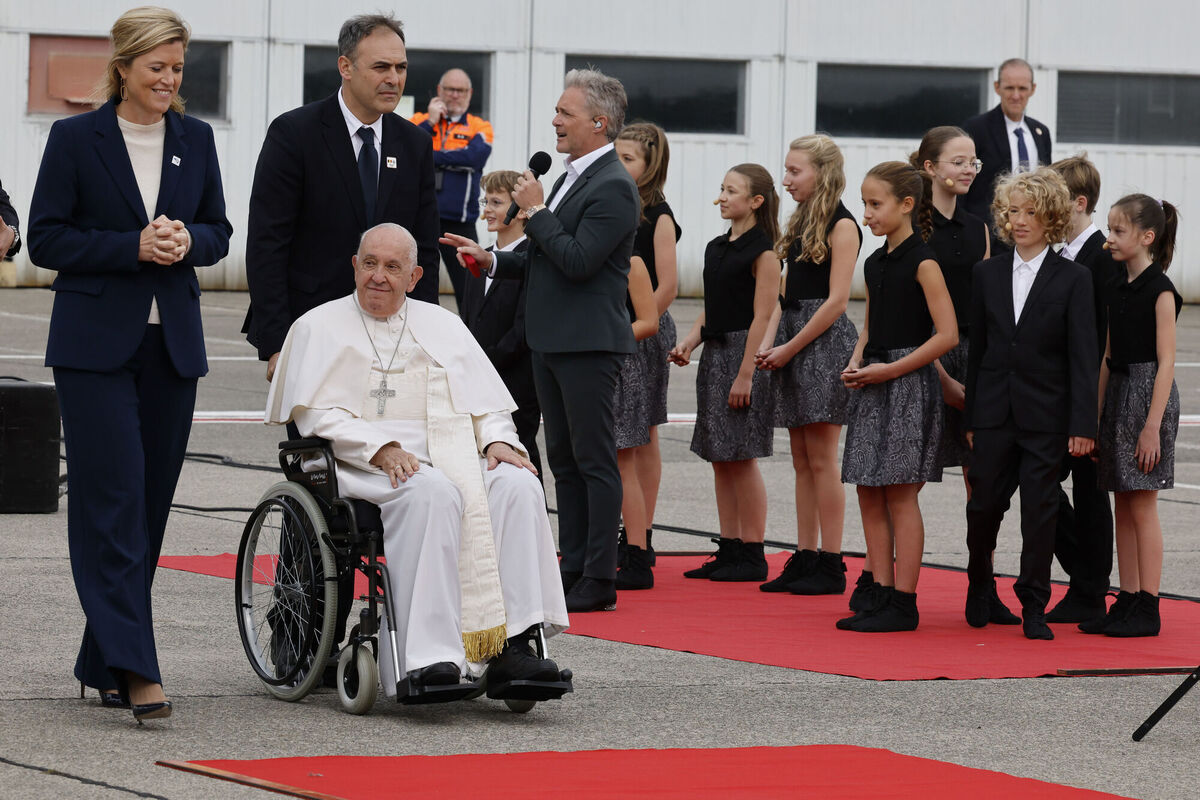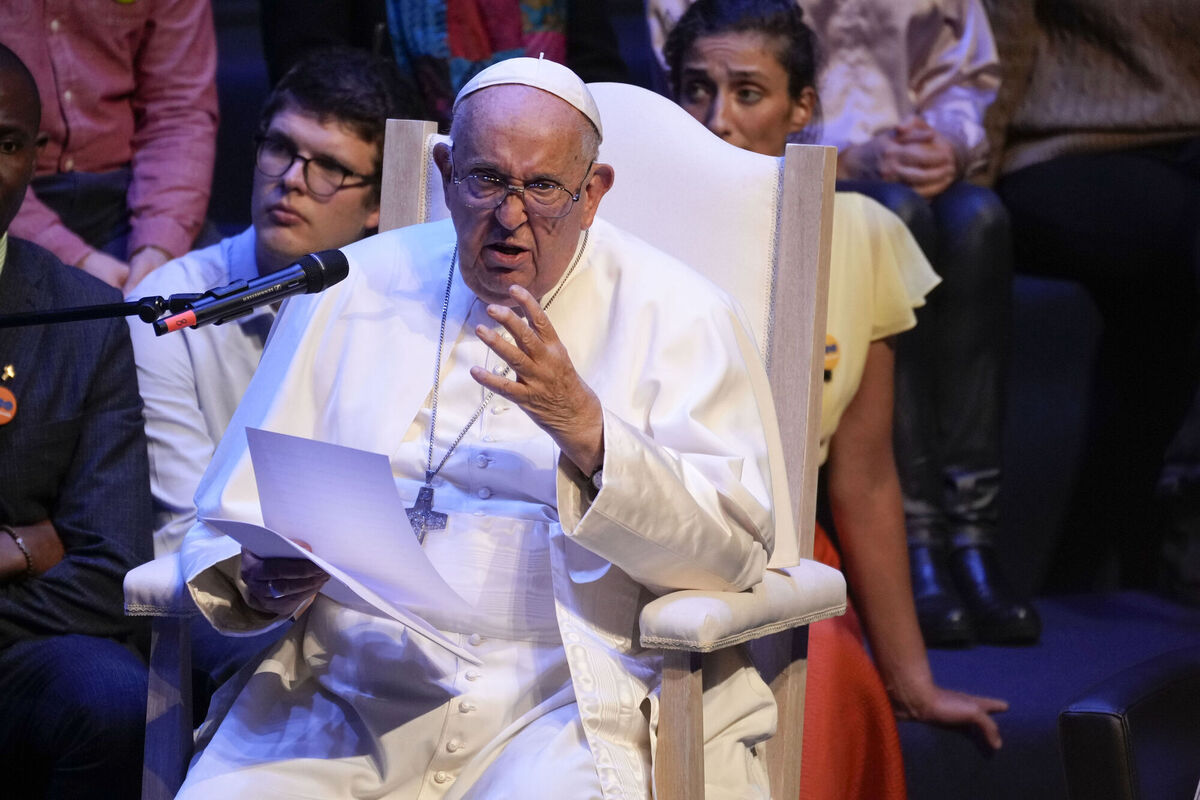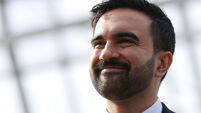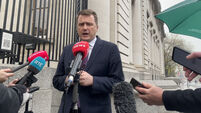TP O'Mahony: Will the Catholic Church ever have a female Pope?

Pope Francis meets students of the Louvain Catholic University last month. Professors and students there issued a strongly-worded press release moments after Francis spoke, in which they said they wanted to express their 'incomprehension and disapproval' about his views on the role of women in society. Photo: AP/Andrew Medichini
If Kamala Harris makes history next month by becoming the first female President of the United States, this will inevitably prompt the question in some quarters — when will the Catholic Church have a female Pope?
Given that it doesn’t yet ordain women to the priesthood or the episcopate, for many this question will seem like something out of a work of ecclesiastical science fiction.
But the second assembly of the Synod on Synodality, which got underway in Rome and runs until October 27, could open the door to a process that, in the fullness of time, might just lead to a female Pope.
What is beyond dispute is that unless this Synod takes a significant initiative on the status and role of women in the Catholic Church, the consequences could be very far-reaching indeed.
According to Massimo Faggioli, professor of theology at Villanova University, the “feeling at the Synod is that something will have to be done about the role of women”. He says: “It’s hard to imagine the issue of the role of women and ministry won’t be at the centre of synodal discernment the next few weeks”.

And because Catholicism still hasn’t found itself in regard to women, the result is that too many women in the Western world have found that Catholicism is not for them.
Writing in Commonweal magazine, Professor Faggioli says the “evidence is there in the loss of entire generations of Catholic women in many countries”. He doesn’t mention Ireland, but the evidence is here as well. Young people, young women in particular, are staying away from churches.
He sounds this warning: “It’s hard to imagine the future of the Church in Europe and the West if this continues."
If the Synod fails to take a significant initiative, it may be left to national churches to take a lead. This could, of course, in turn cause a schism if Rome remains obdurate. Professor Faggioli doesn’t state this, but others have and even Pope Francis himself has acknowledged that he is aware of this danger.
During his recent visit to Belgium, the Pope faced an unprecedented situation when he was sharply criticised by one of the country’s best-known Catholic universities over his stance on the role of women in society.

Professors and students at Louvain, where the 87-year-old pontiff had made a speech, issued a strongly-worded press release moments after Francis spoke, in which they said they wanted to express their “incomprehension and disapproval” about the Pope’s views.
“Louvain deplores the conservative positions expressed by Pope Francis on the role of women in society,” said the statement, in what was described as “extraordinary” language from a Catholic university about a Pope.
In a letter read out to him at the university, students questioned him about the Church’s historical role in entrenching female subservience, the unfair division of labour and even disproportionate female poverty.
“Throughout the history of the Church, women have been made invisible,” the letter read. “What place, then, for women in the Church?”
This is a question that is going to loom increasingly urgently in the future as churches across the Western world grow more and more empty and vocations have all but dried up.
Even if the Synod now underway in Rome fails to address this question — and Pope Francis has already warned against “fashionable reforms” — it will become more and more a central concern in the years ahead.
“When it comes to the role of women in leadership, the gap isn’t just between the Church and modern society,” says Professor Faggioli. “There’s an enormous gap within the Church itself — between official teaching and theology on one side, and lived Catholicism on the other. It’s the experience of the people of God.
While acknowledging that the Synod finds itself in a situation of uncertainty, he also points to a growing sense of inevitability — a feeling that something will have to be done about the role of women.
“The temptation is to say, once again, ‘not yet’, but unless you’re under the illusion that a ‘masculine religious revival’ will finally replenish the seminaries and then the priesthood, it’s not something that can be postponed to the next Pope, the next Vatican Council, or the next century.”
Church historians, by the way, when it comes to the possibility of a female Pope, would seek to remind us that the legend that the Catholic Church once had a female Pope still persists.
Pope Joan was, according to legend, a woman who reigned for two years during the Middle Ages. The belief persists as part of a popular legend, and was even the subject of a 1972 film starring Liv Ulmann in the lead role, with Olivia de Havilland, Lesley-Anne Down, Franco Nero and Maximillian Schell in supporting roles.

In the Oxford Dictionary of Popes, JND Kelly includes a two-page appendix on Pope Joan. “The story, often embellished with fantastic details, was accepted without question in Catholic circles for centuries.”
But he says the story scarcely needs painstaking refutation today, for not only is there no contemporary evidence for a female pope for any of the dates suggested for her reign, but the known facts of the respective periods make it impossible to fit one in.
















